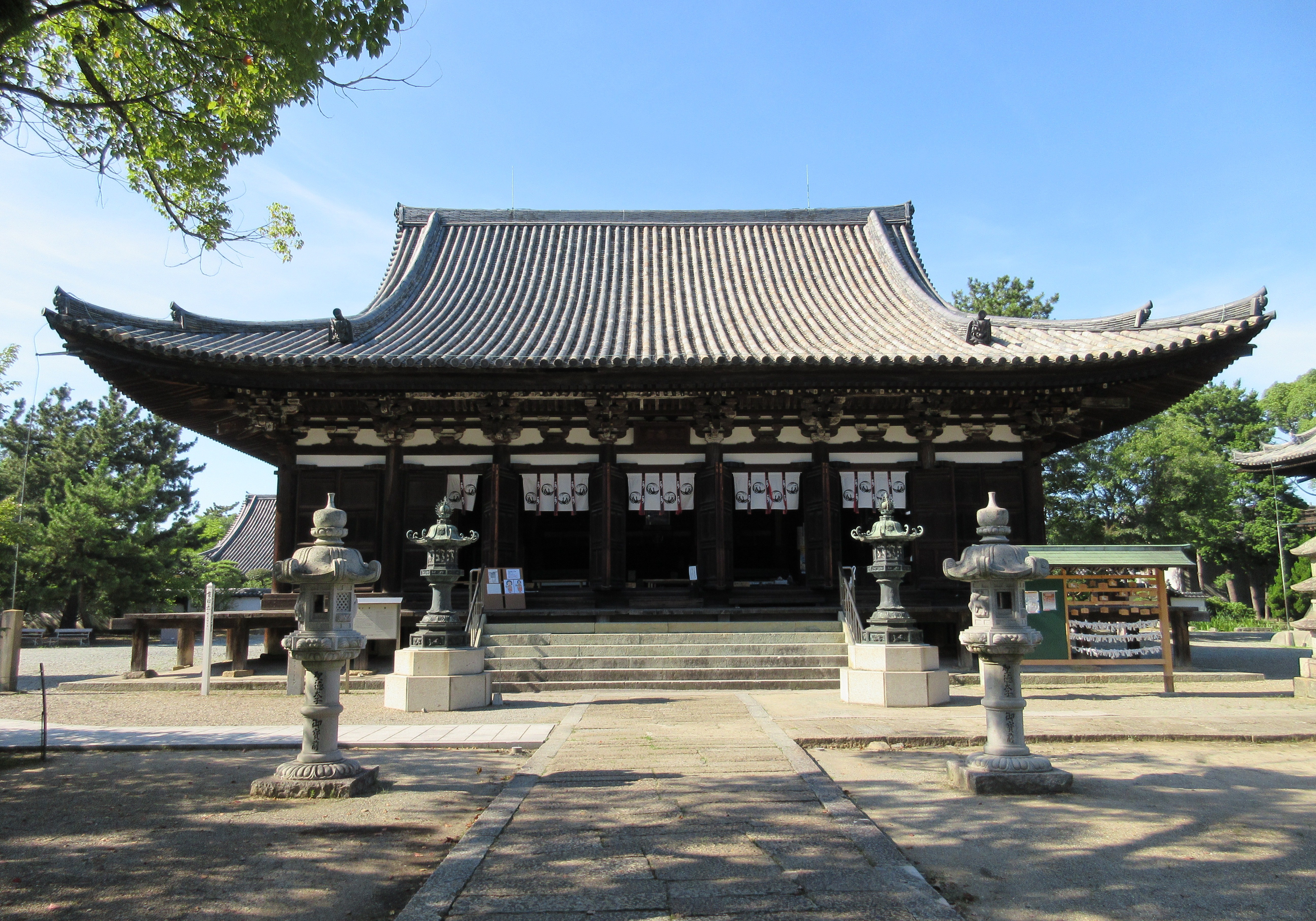Kakurin-ji on:
[Wikipedia]
[Google]
[Amazon]


 The is a temple of the
The is a temple of the
Official Site (Japanese)
6th-century establishments in Japan National Treasures of Japan Important Cultural Properties of Japan Tendai temples Buddhist temples in Hyōgo Prefecture Prince Shōtoku 589 establishments 580s establishments 6th-century religious buildings and structures Temples of Bhaiṣajyaguru Hyogo Prefecture designated tangible cultural property {{Mahayana-stub

Tendai
, also known as the Tendai Dharma Flower School (天台法華宗, ''Tendai hokke shū,'' sometimes just ''Hokkeshū''), is a Mahāyāna Buddhist tradition with significant esoteric elements that was officially established in Japan in 806 by t ...
sect in Kakogawa, Hyōgo, Japan
Japan is an island country in East Asia. Located in the Pacific Ocean off the northeast coast of the Asia, Asian mainland, it is bordered on the west by the Sea of Japan and extends from the Sea of Okhotsk in the north to the East China Sea ...
.
It was established by Prince Shōtoku
, also known as or , was a semi-legendary regent and a politician of the Asuka period in Japan who served under Empress Suiko. He was the son of Emperor Yōmei and his consort, Princess Anahobe no Hashihito, who was also Yōmei's younger half ...
's instruction in 589.
Kakurin-ji's Taishidō was completed in 1112, and Main Hall was finished in 1397. Both are National Treasures of Japan
Some of the National Treasures of Japan
A is " Tangible Cultural Properties designated by law in modern Japan as having extremely high value." Specifically, it refers to buildings, arts, and crafts designated as especially valuable from ...
.
Building list
* Taishidō - National Treasure of Japan. It was built in 1112. * Main Hall - National Treasure of Japan. It was built in 1397. * Jōgyōdō - Important Cultural Property of Japan. It was built inHeian period
The is the last division of classical Japanese history, running from 794 to 1185. It followed the Nara period, beginning when the 50th emperor, Emperor Kammu, moved the capital of Japan to Heian-kyō (modern Kyoto). means in Japanese. It is a ...
.
* Gyōjadō - Important Cultural Property of Japan. It was built in 1406.
*Bell tower
A bell tower is a tower that contains one or more bells, or that is designed to hold bells even if it has none. Such a tower commonly serves as part of a Christian church, and will contain church bells, but there are also many secular bell to ...
- Important Cultural Property of Japan. It was built in 1407.
* Gomadō - Important Cultural Property of Japan. It was built in 1563.
*Pagoda
A pagoda is a tiered tower with multiple eaves common to Thailand, Cambodia, Nepal, India, China, Japan, Korea, Myanmar, Vietnam, and other parts of Asia. Most pagodas were built to have a religious function, most often Buddhist, but some ...
- It was built in Muromachi period
The , also known as the , is a division of Japanese history running from approximately 1336 to 1573. The period marks the governance of the Muromachi or Ashikaga shogunate ( or ), which was officially established in 1338 by the first Muromachi ...
.
*Sanmon
A or is the most important mon of a Japanese Zen Buddhist temple, and is part of the Zen '' shichidō garan'', the group of buildings that forms the heart of a Zen Buddhist temple.JAANUS It can be often found in temples of other denominations ...
- It was built in 1672.
* Kannondō - It was built in 1705.
* Kodō
*Shin- Yakushidō
See also
*National Treasures of Japan
Some of the National Treasures of Japan
A is " Tangible Cultural Properties designated by law in modern Japan as having extremely high value." Specifically, it refers to buildings, arts, and crafts designated as especially valuable from ...
**List of National Treasures of Japan (temples)
The term " National Treasure" has been used in Japan to denote cultural properties since 1897.
The definition and the criteria have changed since the inception of the term. The temple structures in this list were designated national treasures whe ...
*Historical Sites of Prince Shōtoku
The Historical Sites of Prince Shōtoku (聖徳太子御遺跡霊場, ''Shōtoku taishi goiseki reijō'') are a group of 28 Buddhist temples in Japan related to the life of Prince Shōtoku.
Directory
{{DEFAULTSORT:Historical Sites of Pr ...
External links
Official Site (Japanese)
6th-century establishments in Japan National Treasures of Japan Important Cultural Properties of Japan Tendai temples Buddhist temples in Hyōgo Prefecture Prince Shōtoku 589 establishments 580s establishments 6th-century religious buildings and structures Temples of Bhaiṣajyaguru Hyogo Prefecture designated tangible cultural property {{Mahayana-stub